I often find interesting stuffs when working on my plants, be it a normal plant or a (pre)bonsai.
Sometimes the projects works, other times they don't work.
My best example would be my mame root bonsai : http://maubonsai.blogspot.com/2013/03/ligustrum-011-mame-progression-from-root.html
It was just a root cutting that I kept because it had an interesting look to it, and now its one good track to become a nice mame.
My new project is a cuphea mini root that I salvaged during a repotting session.
It was from the cuphea entered in the last OfBonsai Ryuga contest : http://ofbonsai.org/contest/ryuga-2013/entry-cuphea-hyssopifolia-false-heather-mauritius
At first I was not having much expectation for this plant, but now its starting to get more and more appeal to my eyes. I have various ideas for the foliage disposition, but what I know for sure is that I want to try and create a " bunjin (literati) shohin cuphea".
Lets translate that last bit :
Bunjin / Literati = Its a "
bonsai style" difficult to define precisely, this style breaks many rules but nevertheless the trees have an air of refined elegance. The slender trees in
japanese paintings (sumi-e) had an abstract, calligraphic quality that was the inspiration behind cultivating bonsai in this style.
 |
"Pine Trees" (left hand screen) by Hasegawa Tōhaku (Japanese, 1539–1610).
The painting has been designated as National Treasure in the paintings category. |
 |
| Bunjin Bonsai / Literati Bonsai |
Shohin = Shohin-bonsai are 20 cm / 8 inches and under. Basically small sized bonsai ( yes there are BIG sized bonsai, some over 3m high! )
Cuphea = Is the name of the plant. In this case a
Cuphea hyssopifolia.
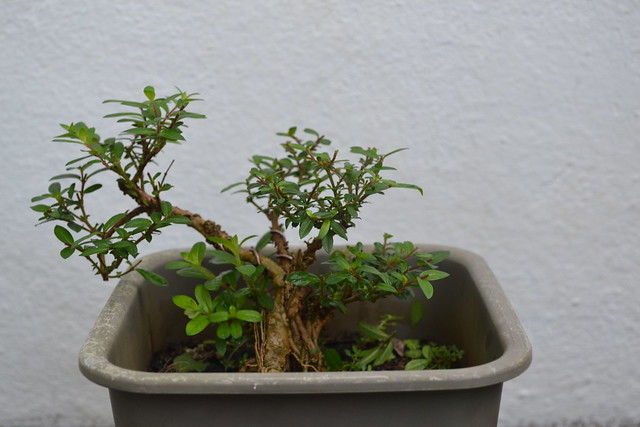 |
| The parent tree |
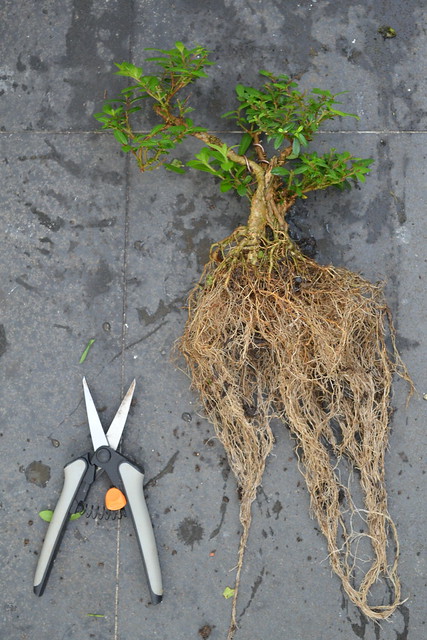 |
| During the repotting session I decided to remove the foliage on the bottom left close to the trunk. |
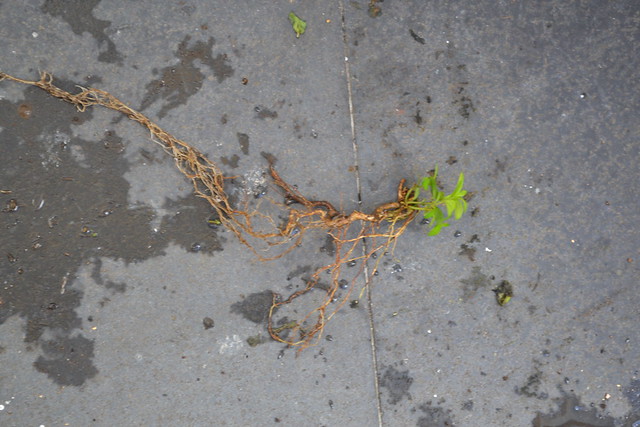 |
| Turns out to have its own root system |
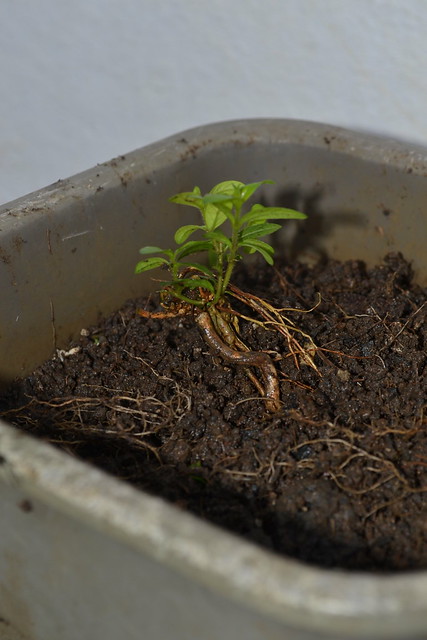 |
| I did an initial repotting. I placed it rather deep into a pot, leaving only a small section out to maximize rooting chances. |
 |
| After some free growing the tree seems to have well rooted and gain back its vigor |
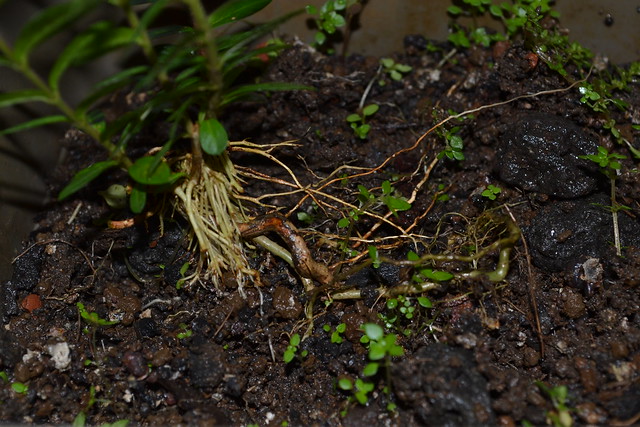 |
| Close-up on the formation of aerial roots |
 |
| Repotting - you can see how the root system has toughen since the first repotting |
 |
Removing the aerial roots.
This section will be the new apex of the future bonsai, this means that I don't need the aerial roots.
I'm trying to create a bunjin here, this means feminine trunk line, not a bulky masculine trunk line. |
 |
| Cleaned up trunk. There are still some roots, but those can be removed later on. |
 |
| Now for the main roots. |
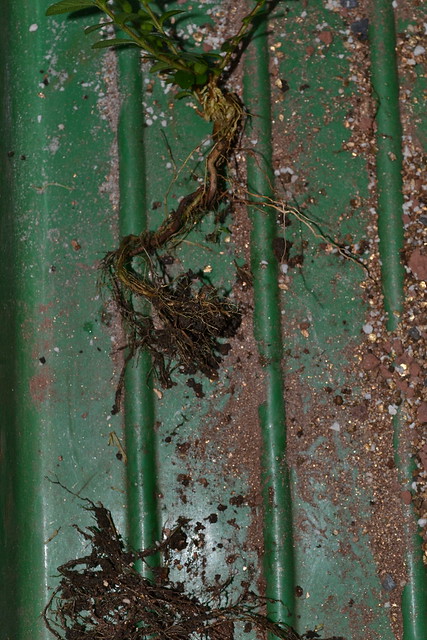 |
| Reduced root ball |
 |
| Repotted |
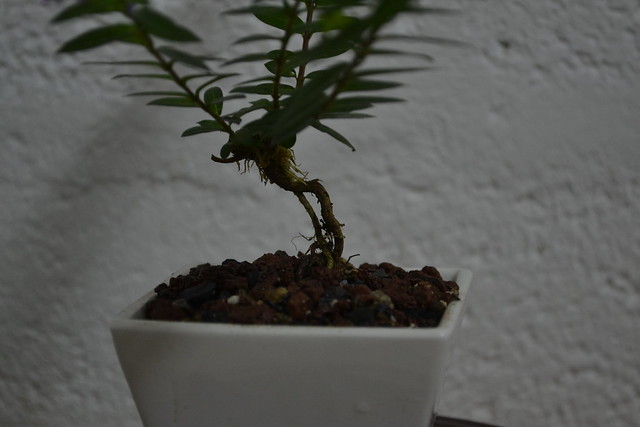 |
| Close-up of the trunk line |
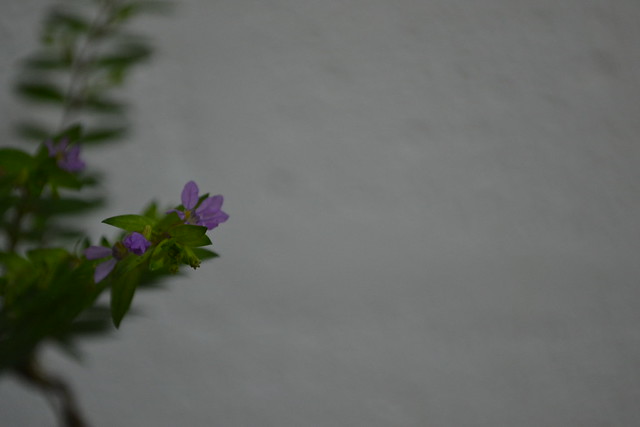 |
| Flower detail |














Very interesting the way it making aerial roots.
ReplyDelete